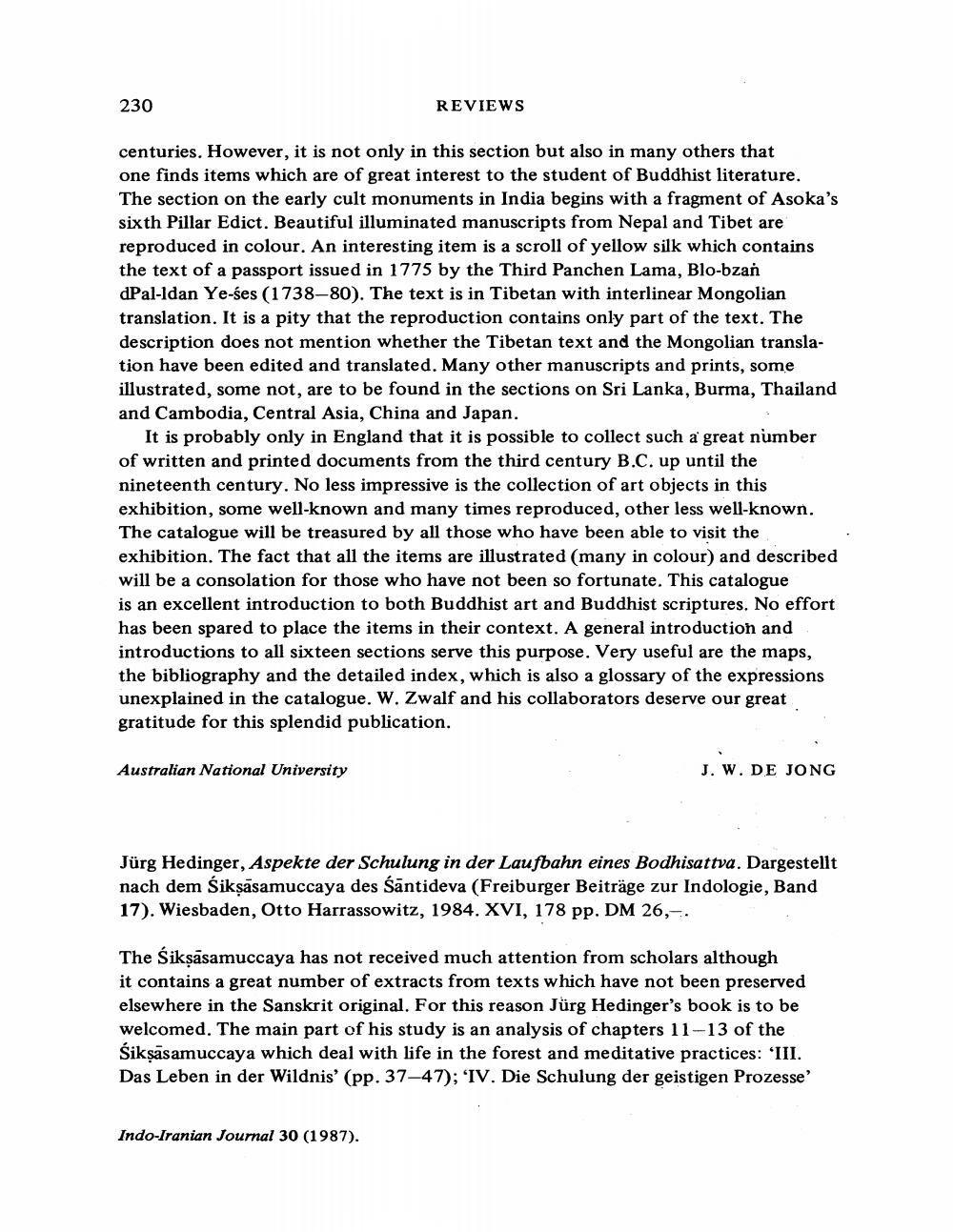________________
230
REVIEWS
centuries. However, it is not only in this section but also in many others that one finds items which are of great interest to the student of Buddhist literature. The section on the early cult monuments in India begins with a fragment of Asoka's sixth Pillar Edict. Beautiful illuminated manuscripts from Nepal and Tibet are reproduced in colour. An interesting item is a scroll of yellow silk which contains the text of a passport issued in 1775 by the Third Panchen Lama, Blo-bzan dPal-ldan Ye-ses (1738-80). The text is in Tibetan with interlinear Mongolian translation. It is a pity that the reproduction contains only part of the text. The description does not mention whether the Tibetan text and the Mongolian translation have been edited and translated. Many other manuscripts and prints, some illustrated, some not, are to be found in the sections on Sri Lanka, Burma, Thailand and Cambodia, Central Asia, China and Japan.
It is probably only in England that it is possible to collect such a great number of written and printed documents from the third century B.C. up until the nineteenth century. No less impressive is the collection of art objects in this exhibition, some well-known and many times reproduced, other less well-known. The catalogue will be treasured by all those who have been able to visit the exhibition. The fact that all the items are illustrated (many in colour and described will be a consolation for those who have not been so fortunate. This catalogue is an excellent introduction to both Buddhist art and Buddhist scriptures. No effort has been spared to place the items in their context. A general introduction and introductions to all sixteen sections serve this purpose. Very useful are the maps, the bibliography and the detailed index, which is also a glossary of the expressions unexplained in the catalogue. W. Zwalf and his collaborators deserve our great gratitude for this splendid publication.
Australian National University
J. W. DE JONG
Jürg Hedinger, Aspekte der Schulung in der Laufbahn eines Bodhisattva. Dargestellt nach dem Śikṣāsamuccaya des Santideva (Freiburger Beiträge zur Indologie, Band 17). Wiesbaden, Otto Harrassowitz, 1984. XVI, 178 pp. DM 26,-.
The Siksasamuccaya has not received much attention from scholars although it contains a great number of extracts from texts which have not been preserved elsewhere in the Sanskrit original. For this reason Jürg Hedinger's book is to be welcomed. The main part of his study is an analysis of chapters 11-13 of the Śikṣasamuccaya which deal with life in the forest and meditative practices: 'III. Das Leben in der Wildnis' (pp. 37–47); 'IV. Die Schulung der geistigen Prozesse'
Indo-Iranian Journal 30 (1987).




